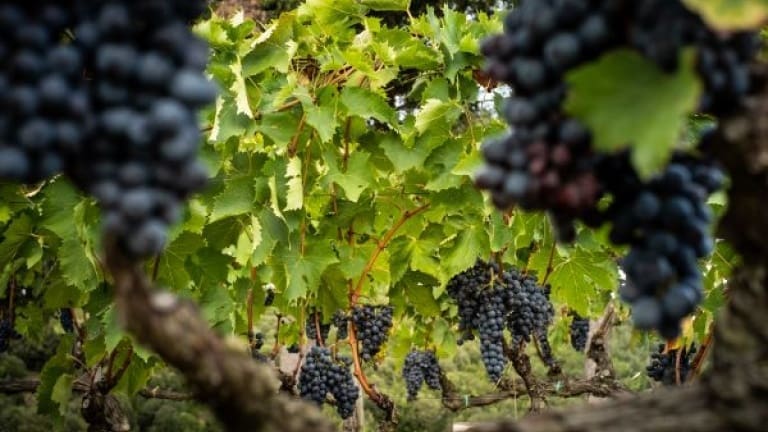Uncorking the Secrets of Brunello di Montalcino: A Comprehensive Guide

The king of every Sangiovese wines comes from Montalcino, where it has always called Brunello, hence the name Brunello di Montalcino. Here, in an area famous since ancient times for the sweetness of Moscadello of Montalcino, are produced some of the best, high-quality wines that have become symbols of the Italian enology, real masterpieces sealed in a bottle.
Structured, dense wines full of extract and with impressive tannins, but that five years of aging, six for Brunello Riserva, can tame and transform into one of the finest wine you can sip.
History of Brunello di Montalcino

The vineyards surrounding Montalcino have always produced good red wines; however, it wasn’t until 1800, thanks to the foresight of Clemente Santi, a Montalcino pharmacist with a passion for viticulture, that Brunello was born.
He was the first to believe in the potential of Sangiovese Grosso grape and make unblended wines with it. He knew that the soil of Montalcino was special, ideal for producing wines of great structure and elegance, that could have withstood decades of aging.
The world discovered his masterpieces in 1865, and the Brunello di Montalcino appellation was established to protect and regulate its production. But years were yet to pass before Brunello was recognized as a top-notch wine, and only in the 90s of the last century, thanks to substantial investments even by American families, did Brunello become a legend.
Organoleptic characteristics of Brunello di Montalcino
The grape with which Brunello di Montalcino is produced is Sangiovese, of course, specifically, it’s the local clone, Sangiovese Grosso, so-called because of the thickness of the skin of the bunches, in which is contained the majority of substances that characterize the wine. And it’s for this reason that the maceration is usually long, not less than 20-30 days, to extract tannins, color, and polyphenols, which are then carved by time and oak barrels, where the wine is aged for at least five years.
The bouquet of Brunello di Montalcino is one of those that can drive any wine lover crazy, of such a complexity that represents the Holy Grail of wine. Red fruits preserved in alcohol are elegantly blended with complex notes of tea, coffee, earth, and mushrooms, which are embellished with balsamic returns and violets that bloom here and there.
The palate is juicy and structured with fern, graphite, and an unmistakable trace that leaves the soil of the hills of Montalcino made of clay, limestone, galestro, and alberese, a kind of stone you can find only here. In the mouth is elegant, structured, warm, and pushed by a freshness that runs through all the wine, making it unique and polished.
50 shades of Brunello
The best are made in the traditional way, which respects the characteristics of Sangiovese and allows the microclimate of Montalcino to work, which takes heat from the Maremma sea and is protected to the south by the majestic Mount Amiata, creating a happy oasis for the vineyards. The recipe for the perfect wine is very simple: low yields per plant, harvesting only the best grapes, perfectly ripe, treating them with respect; and then long, gentle aging in big casks.
Brunello is a wine for those who can wait: it takes years to fulfill its potential: tannins and acidity must soften their hardness, find balance and become round and mingle to create a magical blend of scents that become more and more ethereal. In recent years, many manufacturers are inclined to produce wines that are less tannic and more ready for the market, at the expense of the aging potential and complexity.
Rosso di Montalcino: a great little wine!
Rosso di Montalcino, in contrast, is a more simple and immediate wine, very fresh and graceful with beautiful scents, very pleasant, perfect for Chinese dishes, pizza, or comfort food. It does not require aging in barrels and usually can be drunk within a year or two. Do not forget that the area of production is the same as the Brunello, change only the yields, aging and the “quality” of the grapes, often in vintages considered not so great, a winemaker can decide to not produce Brunello, but a super Rosso di Montalcino.
How to serve the Brunello di Montalcino
We are talking about a precious wine that deserves a place of honor in your cellar. It must rest horizontally at least a couple of weeks before you’ll open, to avoid trauma. Decanting is only possible if sediments are present or if you’ve opened a relatively young Brunello of 10-15 years. You shouldn’t decant bottles older than 20 years, since the bouquet may be ruined: the sudden oxygenation could cause a collapse of the fragile balance of the wine. Serve in large glasses and allow to breathe calmly in the glass. The serving temperature is the classic for red structured wines: 18-20° C.
Price of Brunello di Montalcino

Recommended pairings for Brunello di Montalcino
Dishes of substance such as stews, gnocchi with Bolognese, grilled meat, pasta with wild boar sauce, gyros, hamburgers, baked lasagna, truffle risotto, pulled pork, and Argentine meat empanadas.
